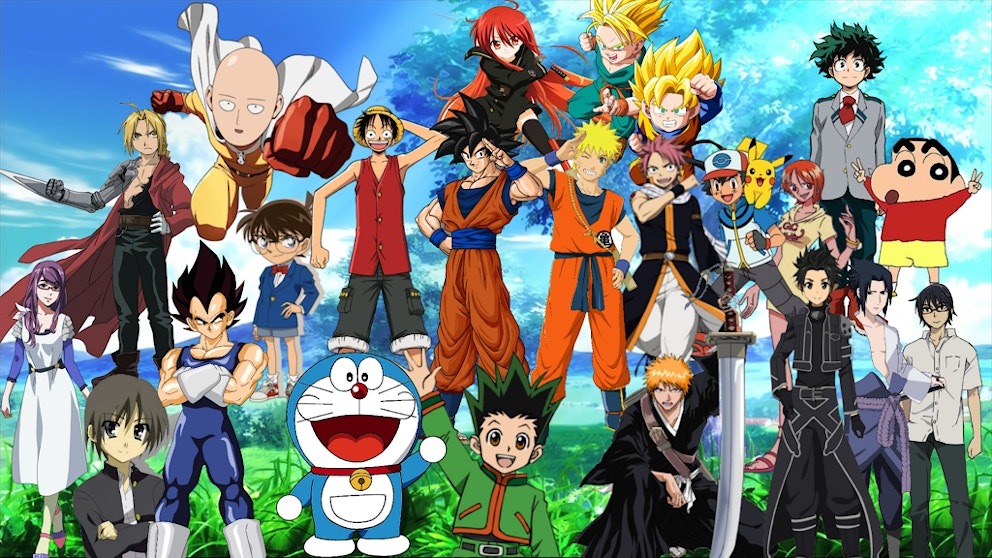Manga: A Gateway to Japanese Pop Culture

Manga, the unique and imaginative form of Japanese comic art, has captivated readers around the globe for decades. With diverse genres, intricate plots, and dynamic artwork, manga is more than just a source of entertainment—it’s a cultural phenomenon. From casual readers to passionate collectors, the global community for manga continues to grow rapidly. In this article, we explore the evolution, cultural significance, genres, and the modern digital platforms that make manga more accessible than ever before, such as mangabuddy.com.
A Brief History of Manga
The word manga translates to “whimsical drawings” in Japanese. Though its roots can be traced back to 12th-century scrolls and ukiyo-e woodblock prints, modern manga began to flourish after World War II. Osamu Tezuka, often referred to as the “God of Manga,” revolutionized the medium with his cinematic storytelling techniques and iconic characters like Astro Boy (Tetsuwan Atom).
In the post-war years, manga became a major part of Japanese culture. By the 1970s and 1980s, manga had begun to diversify, targeting not just children but also teens and adults, offering genres that ranged from romance and action to horror and science fiction.
The Cultural Significance of Manga
Manga holds a special place in Japanese society. It’s not unusual to see people of all ages reading manga in public—on trains, in cafés, or during lunch breaks. Manga is considered an essential form of literature, not only for its entertainment value but also for its ability to explore social issues, politics, and human psychology.
Internationally, manga has helped bridge cultural gaps, introducing global audiences to aspects of Japanese language, traditions, and lifestyle. Anime, which often originates from manga series, has further propelled this cultural export, making characters like Naruto, Goku, and Sailor Moon global icons.
Popular Genres of Manga
One of the key reasons behind manga’s popularity is its rich diversity of genres. No matter your age, gender, or interest, there’s likely a manga series for you. Here are some of the most popular categories:
1. Shonen
Targeted at young males, this genre is action-packed and often includes themes of friendship, rivalry, and self-improvement. Examples include Naruto, One Piece, and My Hero Academia.
2. Shojo
Geared toward young female readers, shojo manga focuses on romance, relationships, and emotional development. Popular titles include Fruits Basket, Ouran High School Host Club, and Sailor Moon.
3. Seinen
Aimed at adult men, seinen manga tackles more mature themes such as politics, war, psychological struggles, and real-life issues. Examples are Berserk, Tokyo Ghoul, and Monster.
4. Josei
Similar to seinen but targeted toward adult women, josei manga often features realistic portrayals of romance and everyday life. Titles like Nana and Honey and Clover are notable in this genre.
5. Isekai
A newer but incredibly popular genre, isekai involves characters being transported to alternate worlds. Sword Art Online and Re:Zero are key examples.
Digital Platforms and the Rise of Online Manga Reading
Gone are the days when manga fans had to rely solely on print editions or wait months for official translations. Thanks to the internet and online platforms, manga is now more accessible than ever before. Sites like mangabuddy.com have played a significant role in revolutionizing how we consume manga.
Mangabuddy.com is a popular digital manga platform that offers thousands of manga series in various genres. With features like instant updates, user-friendly interfaces, and high-resolution images, it has become a go-to site for fans across the globe. Readers can explore trending titles, save their favorite series, and even participate in community discussions.
Why Fans Prefer Sites Like mangabuddy.com
There are several reasons why platforms like mangabuddy.com continue to dominate the digital manga space:
1. Accessibility
Many manga titles are unavailable in local bookstores, especially outside Japan. Mangabuddy.com solves this by providing instant access to a vast library of manga, updated regularly.
2. Affordability
For fans who cannot afford to buy multiple volumes of printed manga, online platforms offer free or subscription-based access to entire series.
3. Portability
Reading manga on mobile devices, tablets, or laptops means fans can enjoy their favorite stories anytime, anywhere.
4. Community Engagement
Sites like mangabuddy.com foster a sense of community. Readers can comment on chapters, rate series, and share their opinions with fellow enthusiasts.
How Manga Influences Other Media
Manga has significantly influenced other forms of entertainment, especially in Japan. Most successful anime series are adapted from manga, serving as visual interpretations of already popular stories. Live-action films, video games, and even stage plays have been inspired by manga plots and characters.
Moreover, Western media has also taken cues from manga. Films like The Matrix drew inspiration from manga aesthetics and storytelling. Graphic novels in the West have adopted manga-style art, and manga conventions now draw huge international crowds.
Educational and Psychological Impact of Manga
Beyond entertainment, manga has educational and psychological benefits. Many educators have begun using manga to teach literacy, foreign language skills, and cultural awareness. Visual learners, in particular, benefit from the dynamic interplay of images and text.
Psychologically, manga provides escapism and emotional relief. Complex characters and story arcs allow readers to connect deeply with the material, which can be therapeutic for those dealing with stress or social anxiety. Manga can even foster empathy by allowing readers to explore life from different perspectives.
Challenges Facing the Manga Industry
Despite its global popularity, the manga industry faces several challenges:
1. Piracy
Unofficial scanlation sites often distribute manga without permission, affecting the income of creators and publishers. While sites like mangabuddy.com aim to provide legitimate access, the industry still struggles to combat piracy effectively.
2. Overwork in the Industry
Manga artists (mangaka) are notorious for their grueling schedules. Many work long hours under tight deadlines, leading to burnout and health issues.
3. Localization Issues
While manga is increasingly being translated into multiple languages, some cultural nuances are lost in translation. Adapting jokes, idioms, and cultural references remains a challenge.
The Future of Manga and Online Reading Platforms
With technology continuously evolving, the future of manga looks promising. Innovations such as interactive manga, augmented reality (AR), and motion comics are on the horizon. These will offer immersive experiences that go beyond traditional storytelling.
Digital platforms like mangabuddy.com will likely integrate advanced features such as AI-powered recommendations, multilingual support, and exclusive artist collaborations. As fan communities grow, online manga ecosystems will become more vibrant and inclusive.
Conclusion: Manga’s Enduring Legacy
Manga is more than just illustrated storytelling—it’s an art form, a cultural bridge, and a reflection of society. From humble beginnings to global dominance, manga continues to evolve, bringing people together through shared narratives and unforgettable characters.
With platforms like mangabuddy.com making it easier than ever to dive into the manga universe, there’s never been a better time to become a manga enthusiast. Whether you’re a seasoned reader or a newcomer looking for your first series, manga offers a boundless world of imagination, emotion, and excitement waiting to be explored.





